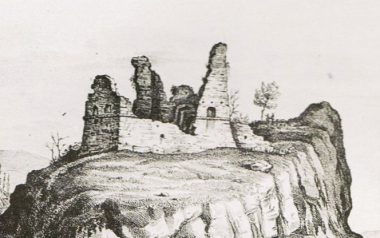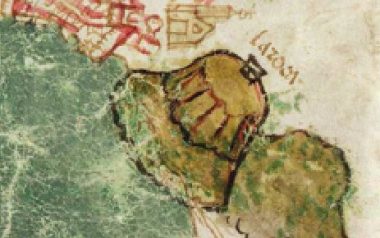Garda fortress
It owes the toponym Garda used initially with reference to the locality and subsequently to the entire lake in replacement of the much older Latin name of Benaco.
Garda fortress: on the top of the hill, findings have been made that testify to the use of the place since the Bronze Age, with evidence also from the Roman era. But it is only with the fortress built between the end of the fifth and the beginning of the sixth century that this place has changed the name of the entire lake.
From the archaeological studies carried out on the top it appears that towards the middle of the fifth century there were houses built with a poor technique, similar to those present also in the area of the pieve di Manerba; buildings with a stone base and walls made of wood and earth or clay. Several fragments of containers from Africa and Turkey have been found from this period, elements that suggest a good economic level of the inhabitants.
Subsequently, between the end of the 5th and the beginning of the 6th century there seems to have been a general reorganization of the area with the abandonment of the housing structures, the construction of a religious building and the creation of a large planimetric complex building located in the western part of the plateau, towards the overhanging lake; which would correspond to the fortress. The cult building built near the access door of the fortress appears to have been a single-chamber church with a semicircular apse, with mosaic flooring with polychrome tesserae and walls with paintings; both inside and outside the church, tombs have been found.
Subsequently, based on the scarce elements available, it seems likely that in a period between the eleventh and twelfth centuries the church was abandoned and the building reused for other functions including cemetery ones. In 1193 Emperor Henry VI sold the Rocca di Garda to the City of Verona for 700 silver brands, but it seems that at the beginning of the thirteenth century the fortress was demolished by the Veronese for unknown reasons. The area should have been abandoned between the 14th and 15th centuries, to then be used for agricultural purposes with a destructive “shaving” of the land and consequent mixing and spreading of the remaining archaeological elements.
Linked to the history of the fortress is that, intertwined with reveries, of Queen Adelaide of Burgundy, widow of Lothair II and later empress. In 947 Adelaide married Lotario, but he died poisoned in 950, probably by Berengario II who then tried to make her marry his first-born Adalberto, but she refused; she is therefore imprisoned first in the fortress of Lierna on Lake Como and later in the fortress of Garda, from which however she manages to escape to repair in Reggio in the fortress of Canossa, from where she asks for help to King Otto I of Germany who descends to Italy and after having freed her, he married her in Pavia in 951. The following year she and King Ottone go down to Rome where emperors are crowned. As for the escape from the fortress of Garda, the legend tells that after months of imprisonment and solitude, interrupted only by the visits of Brother Martino, he manages to escape through a tunnel dug by the friar that leads to a shelter now called “Adelaide’s cave”, then went down to the lake, with a fisherman’s boat he reached the Sirmione area, crossed the Lugana forest and then arrived at the fortress of Canossa near Reggio.
Archaeological information from G.B.Brogiolo


